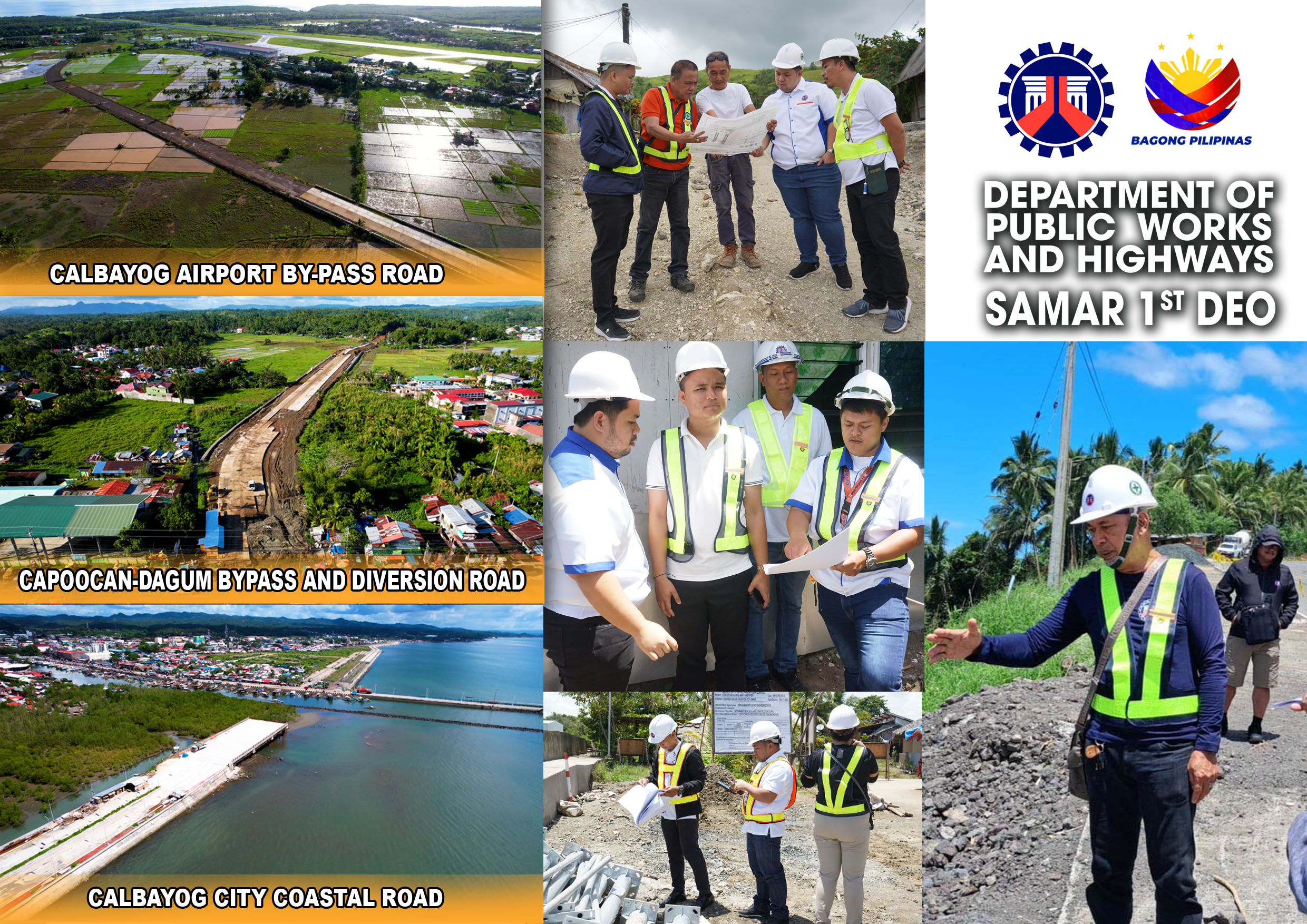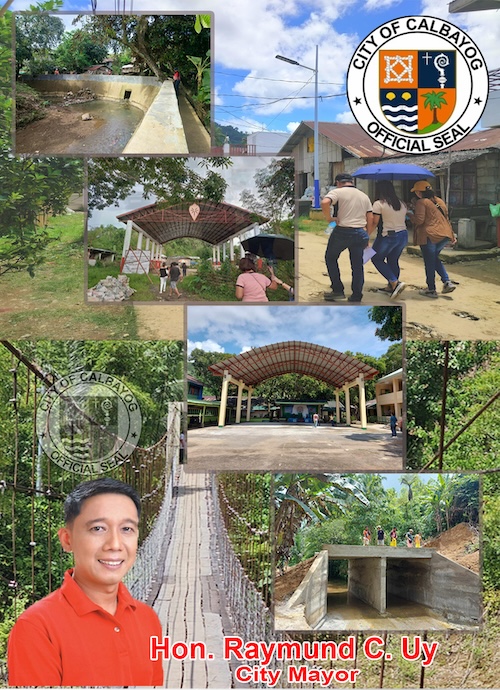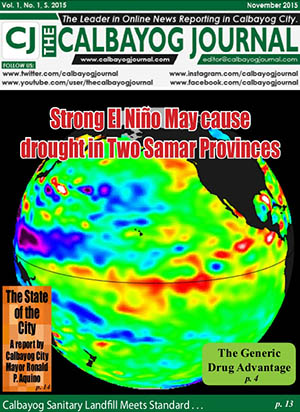Story/Photos: Elmer Recuerdo
(This story is published with the support of the Philippine Press Institute, Novartis and ICanServe Foundation. The World Health Organization has declared October 19 as International Day against breast cancer to raise awareness and promote women's access to timely and effective controls, diagnoses and treatments.)
(This story is published with the support of the Philippine Press Institute, Novartis and ICanServe Foundation. The World Health Organization has declared October 19 as International Day against breast cancer to raise awareness and promote women's access to timely and effective controls, diagnoses and treatments.)

TACLOBAN CITY – The road to pedal never seems to end, but for 63-years old Mano Nestor, a pedicab driver, this is the only way to survive in a city that is far away from home.
For the last eight years, this city has been his second home since he, along with his wife and two daughters, came to migrate to seek medical attention – his wife was in an advanced stage of breast cancer.
"I used to be a fisherman with a small vegetable garden beside our house but I have to sell everything – fishing boat, net and even my house – to bring my wife and children here. I thought she could still be saved but it was too late," he said. His wife died in 2016.
Mano Nestor is originally from Sto. Ni?o, an island municipality in Samar some 23 kilometers from Calbayog City, its nearest neighboring municipality in the mainland.
He said his wife noticed a small lump in her left breast sometime in 2000 but didn't mind it since she didn't feel any pain or discomfort. They didn't go to the rural health center for a check-up either since, aside from the absence of any other symptom, the health center was on the other side of the island.
Eventually, the small lump started to grow and later another lump also started showing in her right armpit. "She started getting dizzy more often but it would eventually go away after taking paracetamol and getting a rest," he said. The medicine was suggested by their neighbor.
In 2014, Mano Nestor noticed her wife's breast was getting plump with secretion of blood prompting him to bring his wife to the health center.
"She was always in pain and dizzy and the paracetamol was no longer effective. The doctor advised us to get her checked in Tacloban," he said.
At that time, however, Tacloban City was still in shambles due to the devastation brought by Typhoon Yolanda. "We have no choice but to avail of whatever is available. Her pain was getting worse," he said as he recalls the difficulties that his family went through upon their arrival in the city.
With the help of a local resident he met who was also accompanying his wife who was in chemotherapy, Mano Nestor was able to get a small place at a cheap rent where the family still lives until this time.
"We decided to permanently live here. My daughters also wanted to stay here because there are hospitals just in case they also get sick like their mother," he added.
For the last eight years, this city has been his second home since he, along with his wife and two daughters, came to migrate to seek medical attention – his wife was in an advanced stage of breast cancer.
"I used to be a fisherman with a small vegetable garden beside our house but I have to sell everything – fishing boat, net and even my house – to bring my wife and children here. I thought she could still be saved but it was too late," he said. His wife died in 2016.
Mano Nestor is originally from Sto. Ni?o, an island municipality in Samar some 23 kilometers from Calbayog City, its nearest neighboring municipality in the mainland.
He said his wife noticed a small lump in her left breast sometime in 2000 but didn't mind it since she didn't feel any pain or discomfort. They didn't go to the rural health center for a check-up either since, aside from the absence of any other symptom, the health center was on the other side of the island.
Eventually, the small lump started to grow and later another lump also started showing in her right armpit. "She started getting dizzy more often but it would eventually go away after taking paracetamol and getting a rest," he said. The medicine was suggested by their neighbor.
In 2014, Mano Nestor noticed her wife's breast was getting plump with secretion of blood prompting him to bring his wife to the health center.
"She was always in pain and dizzy and the paracetamol was no longer effective. The doctor advised us to get her checked in Tacloban," he said.
At that time, however, Tacloban City was still in shambles due to the devastation brought by Typhoon Yolanda. "We have no choice but to avail of whatever is available. Her pain was getting worse," he said as he recalls the difficulties that his family went through upon their arrival in the city.
With the help of a local resident he met who was also accompanying his wife who was in chemotherapy, Mano Nestor was able to get a small place at a cheap rent where the family still lives until this time.
"We decided to permanently live here. My daughters also wanted to stay here because there are hospitals just in case they also get sick like their mother," he added.

FINDING OUT TOO LATE
The experience that Mano Nestor's wife has to go through is not an isolated case. Majority of breast cancer patients in Eastern Visayas are diagnosed when they are already in the late stage – either Stage III or IV.
The Philippines recorded the highest prevalence of breast cancer among 197 countries in 2017 with 53% of breast cancers in the country diagnosed in Stages III and IV, while only 2%–3% of cases are diagnosed in Stage I.
It is the most common type of cancer in women in the country with an incidence rate of 17.6%, accounting for 15% of all new cancer cases and 8% of all cancer deaths.
Kara Magsanoc-Alikpala, founding president of ICanServe Foundation, an advocacy and support group for women with breast cancer, said new advancements in the treatment of breast cancer offer women a greater chance than ever before to live healthy and fulfilling lives with improved survival rates.
"Breast cancer is not a death sentence," says Alikpala, who herself was diagnosed with breast cancer 26 years ago.
However, better survival rates can only be achieved if a patient is diagnosed in an early stage and there much is to be desired in terms of early detection of breast cancer in Eastern Visayas.
College instructor Aurora Casimpan, a survivor of Stage III breast cancer, said mothers from poor families have the tendency to worry about their family's economic condition first above their own personal health.
"They worry more about the food to put on the table than going to a clinic to have themselves checked," she said.
"Family survival comes first before their own personal survival. So, in many cases they are seen late by the doctor and the cancer cells have already metastasized. They would only go to a doctor if the pain is already persistent. So how can they be treated?" she laments.
Casimpan is the president of Circle of Hope, a semi-active support group for women with breast cancer and whose members are all cancer survivors. Every year, the members meet during Christmas break to renew ties and update each other.
She said most of their members are from the different provinces of Samar and majority of them were already in the advanced stage of cancer when they were diagnosed.
"It is expensive to get breast cancer," she said. For them to get tested, she said, they have to travel all the way to Tacloban. "Transportation, food and accommodation alone cost much and are already beyond their means. If the government wants to help them, it should bring the service closer to them."
For a while, the group actively reaches out to women with breast cancer to help them in the treatment navigation especially on where and how to avail government services for breast cancer patients for free. They would meet once a month to come up with activities to help individuals battling with the disease.
"At the time that I was battling with breast cancer, I felt that I had to face it alone. I did not want to trouble other people, even my family," she said. "The world will not stop spinning just because you are sick. All the people around you will keep on living."
Facing breast cancer alone, she said, included paying P24,000 per protocol of the six chemotherapy sessions that she underwent, which at that time was not covered by PhilHealth.
"For each protocol I have to set aside P50,000 to cover also the supportive medicines. At least in my case, I only have one protocol per session, but others who have a more severe case have two," she said.
Casimpan said there should be programs to reach out to women, especially those in far-flung areas, to get themselves checked for breast cancer before their condition worsens and be beyond treatment.
"Breast cancer can be fatal, but if it is diagnosed early, it can be cured," she said.
The experience that Mano Nestor's wife has to go through is not an isolated case. Majority of breast cancer patients in Eastern Visayas are diagnosed when they are already in the late stage – either Stage III or IV.
The Philippines recorded the highest prevalence of breast cancer among 197 countries in 2017 with 53% of breast cancers in the country diagnosed in Stages III and IV, while only 2%–3% of cases are diagnosed in Stage I.
It is the most common type of cancer in women in the country with an incidence rate of 17.6%, accounting for 15% of all new cancer cases and 8% of all cancer deaths.
Kara Magsanoc-Alikpala, founding president of ICanServe Foundation, an advocacy and support group for women with breast cancer, said new advancements in the treatment of breast cancer offer women a greater chance than ever before to live healthy and fulfilling lives with improved survival rates.
"Breast cancer is not a death sentence," says Alikpala, who herself was diagnosed with breast cancer 26 years ago.
However, better survival rates can only be achieved if a patient is diagnosed in an early stage and there much is to be desired in terms of early detection of breast cancer in Eastern Visayas.
College instructor Aurora Casimpan, a survivor of Stage III breast cancer, said mothers from poor families have the tendency to worry about their family's economic condition first above their own personal health.
"They worry more about the food to put on the table than going to a clinic to have themselves checked," she said.
"Family survival comes first before their own personal survival. So, in many cases they are seen late by the doctor and the cancer cells have already metastasized. They would only go to a doctor if the pain is already persistent. So how can they be treated?" she laments.
Casimpan is the president of Circle of Hope, a semi-active support group for women with breast cancer and whose members are all cancer survivors. Every year, the members meet during Christmas break to renew ties and update each other.
She said most of their members are from the different provinces of Samar and majority of them were already in the advanced stage of cancer when they were diagnosed.
"It is expensive to get breast cancer," she said. For them to get tested, she said, they have to travel all the way to Tacloban. "Transportation, food and accommodation alone cost much and are already beyond their means. If the government wants to help them, it should bring the service closer to them."
For a while, the group actively reaches out to women with breast cancer to help them in the treatment navigation especially on where and how to avail government services for breast cancer patients for free. They would meet once a month to come up with activities to help individuals battling with the disease.
"At the time that I was battling with breast cancer, I felt that I had to face it alone. I did not want to trouble other people, even my family," she said. "The world will not stop spinning just because you are sick. All the people around you will keep on living."
Facing breast cancer alone, she said, included paying P24,000 per protocol of the six chemotherapy sessions that she underwent, which at that time was not covered by PhilHealth.
"For each protocol I have to set aside P50,000 to cover also the supportive medicines. At least in my case, I only have one protocol per session, but others who have a more severe case have two," she said.
Casimpan said there should be programs to reach out to women, especially those in far-flung areas, to get themselves checked for breast cancer before their condition worsens and be beyond treatment.
"Breast cancer can be fatal, but if it is diagnosed early, it can be cured," she said.

URBAN CENTERED TREATMENT
Dr. Brylle Dala, an oncologist and chief of the Chemotherapy Unit at Eastern Visayas Medical Center, said the problem with breast cancer cases in the region is that they are usually detected in the late stage due to inaccessibility of health facilities and personnel to diagnose their illness early on.
"What should be done is once a patient has a palpable or suspicious mass on her breast, the first step is to undergo a confirmatory test, if it is benign or malignant. So, it is mammography or breast ultrasound for those less than 40 years old," Dr. Dala said.
But in a poor region like Eastern Visayas, such facilities are not readily available in the provinces. Except for Leyte where Tacloban City is located, none of the five other provinces have the facilities.
Patients suspected of having breast cancer who seek treatment in the different provincial hospitals are usually referred to Eastern Visayas Medical Center, the apex hospital in the region. EVMC is also part of the National Cancer Center Network of the Department of Health.
Two other private hospitals in the city offer treatment for breast cancer.
The absence of specialists and testing facilities for breast cancer that is accessible to them have discouraged many women with suspected mass from seeking medical attention until it is too late.
In September this year, out of 171 breast cancer patients seeking treatment at the EVMC Chemotherapy Unit, 76 of them were already in Stage IV where survival rate is greatly diminished.
Data from the Department of Health regional office in Eastern Visayas shows that from 2018 to 2022, a total of 428 patients have died due to breast cancer in the region, 419 of them were women.
Dr. Brylle Dala, an oncologist and chief of the Chemotherapy Unit at Eastern Visayas Medical Center, said the problem with breast cancer cases in the region is that they are usually detected in the late stage due to inaccessibility of health facilities and personnel to diagnose their illness early on.
"What should be done is once a patient has a palpable or suspicious mass on her breast, the first step is to undergo a confirmatory test, if it is benign or malignant. So, it is mammography or breast ultrasound for those less than 40 years old," Dr. Dala said.
But in a poor region like Eastern Visayas, such facilities are not readily available in the provinces. Except for Leyte where Tacloban City is located, none of the five other provinces have the facilities.
Patients suspected of having breast cancer who seek treatment in the different provincial hospitals are usually referred to Eastern Visayas Medical Center, the apex hospital in the region. EVMC is also part of the National Cancer Center Network of the Department of Health.
Two other private hospitals in the city offer treatment for breast cancer.
The absence of specialists and testing facilities for breast cancer that is accessible to them have discouraged many women with suspected mass from seeking medical attention until it is too late.
In September this year, out of 171 breast cancer patients seeking treatment at the EVMC Chemotherapy Unit, 76 of them were already in Stage IV where survival rate is greatly diminished.
Data from the Department of Health regional office in Eastern Visayas shows that from 2018 to 2022, a total of 428 patients have died due to breast cancer in the region, 419 of them were women.

DOH-8 has no data on the prevalence of breast cancer in the region since its cancer prevention program started only in 2018.
Dr. Dala said that as an apex hospital, those that should be referred to EVMC are patients for definitive treatment including those who are confirmed and diagnosed with breast cancer while prevention should be done at the lower level such as rural health units.
"But this is not what happens. They come here to get checked and sadly what we see are cases that are in an advanced stage because they have no access to early detection," he said.
He said provincial local government units should make the initial move to bring early detection and treatment nearer to the people.
"Local governments should create partnerships with apex the hospital to have satellite clinics. In satellite clinics, they can schedule maybe once or twice-a-month consultations where we can bring a team of specialists from the apex hospital so that coordination is easier," he said.
Unlike other illnesses, cancer care and treatment involve a multidisciplinary team that a specialist cannot work without the others.
"We cannot treat cancer alone without the CT scan, a pathologist that will read the biopsy, and a medical oncologist. That is the reason why provincial hospitals do not have breast cancer treatment, it is not only the machine that is needed but also experts of various disciplines. In Eastern Visayas, we can only find them in Tacloban," Dr. Dala said.
For a region like Eastern Visayas, with a population of 4.5 million in 2020, there are only four medical oncologists at present and two mammography specialists who can read and interpret results – all of them are based in Tacloban.
Dr. Dala admitted that even if the provincial LGUs will establish satellite clinics for early detection and treatment of breast cancer, forming a team of specialists that will conduct consultations on a regular basis in the provinces can be difficult to manage due to lack of available experts in the region.
"It is difficult but it can be done," he said.
Dr. Dala said that as an apex hospital, those that should be referred to EVMC are patients for definitive treatment including those who are confirmed and diagnosed with breast cancer while prevention should be done at the lower level such as rural health units.
"But this is not what happens. They come here to get checked and sadly what we see are cases that are in an advanced stage because they have no access to early detection," he said.
He said provincial local government units should make the initial move to bring early detection and treatment nearer to the people.
"Local governments should create partnerships with apex the hospital to have satellite clinics. In satellite clinics, they can schedule maybe once or twice-a-month consultations where we can bring a team of specialists from the apex hospital so that coordination is easier," he said.
Unlike other illnesses, cancer care and treatment involve a multidisciplinary team that a specialist cannot work without the others.
"We cannot treat cancer alone without the CT scan, a pathologist that will read the biopsy, and a medical oncologist. That is the reason why provincial hospitals do not have breast cancer treatment, it is not only the machine that is needed but also experts of various disciplines. In Eastern Visayas, we can only find them in Tacloban," Dr. Dala said.
For a region like Eastern Visayas, with a population of 4.5 million in 2020, there are only four medical oncologists at present and two mammography specialists who can read and interpret results – all of them are based in Tacloban.
Dr. Dala admitted that even if the provincial LGUs will establish satellite clinics for early detection and treatment of breast cancer, forming a team of specialists that will conduct consultations on a regular basis in the provinces can be difficult to manage due to lack of available experts in the region.
"It is difficult but it can be done," he said.

NEW MISSION SPRINGS HOPE
In Tacloban, the city government launched a program in August this year that proactively looks for women who may have breast cancer and get them treated for free.
The initiative, dubbed as Mission Leapfrog Program, is a pilot project that aims to increase awareness on breast and cervical cancer, conduct medical screening for early detection of cancer and create a complete navigation guide that can be replicated in other local government units.
The program, jointly being undertaken by the city government and DOH regional office with funding from a pharmaceutical company, involves multi-stakeholders like PhilHealth, EVMC through Dr. Dala, the Department of Education, Tingog Party List and the Office of House Speaker Martin Romualdez.
Dr. Danilo Ecarma, Tacloban City Health Officer, said the program targets to conduct clinical breast cancer screening to at least 29,000 women who are 40 years and above in the community level.
The program rolled out breast cancer screening on public school teachers with 750 teachers already tested until mid-September while at least 1,000 others will be tested before the end of the year.
Ecarma said that out of the 750 teachers that were screened, six of them were found to have a lump on their breast and subsequent tests found two were benign, two were tested positive of breast cancer and two others are awaiting results of their biopsy.
Except for one teacher who was found positive of breast cancer, the five others were not conscious of the lump on their breast. "She didn't expect that her lump is cancerous because she didn't manifest any symptom," says Dr. Dala.
In Tacloban, the city government launched a program in August this year that proactively looks for women who may have breast cancer and get them treated for free.
The initiative, dubbed as Mission Leapfrog Program, is a pilot project that aims to increase awareness on breast and cervical cancer, conduct medical screening for early detection of cancer and create a complete navigation guide that can be replicated in other local government units.
The program, jointly being undertaken by the city government and DOH regional office with funding from a pharmaceutical company, involves multi-stakeholders like PhilHealth, EVMC through Dr. Dala, the Department of Education, Tingog Party List and the Office of House Speaker Martin Romualdez.
Dr. Danilo Ecarma, Tacloban City Health Officer, said the program targets to conduct clinical breast cancer screening to at least 29,000 women who are 40 years and above in the community level.
The program rolled out breast cancer screening on public school teachers with 750 teachers already tested until mid-September while at least 1,000 others will be tested before the end of the year.
Ecarma said that out of the 750 teachers that were screened, six of them were found to have a lump on their breast and subsequent tests found two were benign, two were tested positive of breast cancer and two others are awaiting results of their biopsy.
Except for one teacher who was found positive of breast cancer, the five others were not conscious of the lump on their breast. "She didn't expect that her lump is cancerous because she didn't manifest any symptom," says Dr. Dala.

Ecarma said that to meet the targeted number of women for testing, the TCHO has trained all the barangay health workers on clinical breast cancer screening. The BHW also assisted in the conduct of screening on public school teachers to get them more familiar with the actual application.
"When we are done with the teachers, these BHW will start screening in their respective communities to find these women who may have breast cancer," he said. The BHWs are also mandated to go on a house-to-house visitation to increase public awareness on breast cancer.
"Awareness in the community is very crucial to bring these women to undergo regular screening. Once a woman reaches 40, she has to undergo screening every year. People in the community have very little knowledge about breast cancer and proper self-examination," the health official added.
"We want to see rapid progress in terms of delivery of cancer services," explains Ecarma on why the program is called Mission Leapfrog. "What we want to achieve is to have a complete navigation guide for a patient – what to do and where to go if a patient is found to have breast cancer. One needs to have guidance on at least where they can avail of free medical services."
He said that under the Mission Leapfrog, a referral pathway for women with breast cancer will be established and the whole treatment can be availed for free.
He said the city government offers free medical services under its Medical Assistance for Indigents Program that a breast cancer patient may avail – from mammography or breast ultrasound to biopsy and treatment.
Ecarma added that as the pilot area, the Mission Leapfrog program implementation in Tacloban is documenting its best practices that can be replicated in other areas.
"This is a debilitating illness that can ruin a family financially. Treatment can eat up all the family resources," he said. "Getting a breast cancer used to be treated as a life sentence but there are new technologies for treatment."
"Yes, it is curable but the key is getting women tested early on."(CJ/jmm/ER)
"When we are done with the teachers, these BHW will start screening in their respective communities to find these women who may have breast cancer," he said. The BHWs are also mandated to go on a house-to-house visitation to increase public awareness on breast cancer.
"Awareness in the community is very crucial to bring these women to undergo regular screening. Once a woman reaches 40, she has to undergo screening every year. People in the community have very little knowledge about breast cancer and proper self-examination," the health official added.
"We want to see rapid progress in terms of delivery of cancer services," explains Ecarma on why the program is called Mission Leapfrog. "What we want to achieve is to have a complete navigation guide for a patient – what to do and where to go if a patient is found to have breast cancer. One needs to have guidance on at least where they can avail of free medical services."
He said that under the Mission Leapfrog, a referral pathway for women with breast cancer will be established and the whole treatment can be availed for free.
He said the city government offers free medical services under its Medical Assistance for Indigents Program that a breast cancer patient may avail – from mammography or breast ultrasound to biopsy and treatment.
Ecarma added that as the pilot area, the Mission Leapfrog program implementation in Tacloban is documenting its best practices that can be replicated in other areas.
"This is a debilitating illness that can ruin a family financially. Treatment can eat up all the family resources," he said. "Getting a breast cancer used to be treated as a life sentence but there are new technologies for treatment."
"Yes, it is curable but the key is getting women tested early on."(CJ/jmm/ER)




















